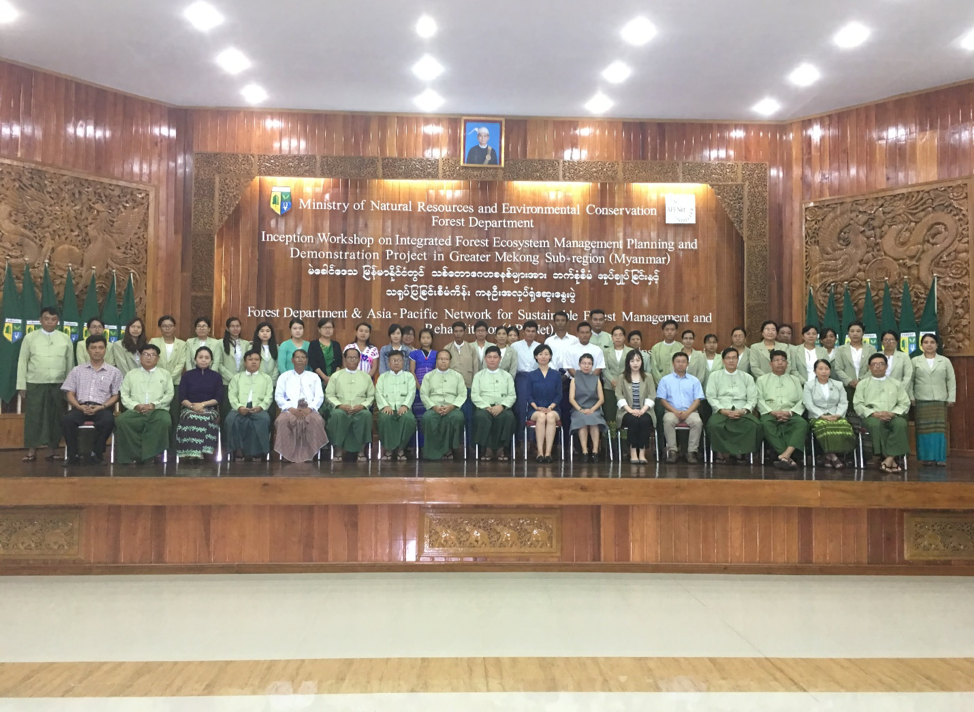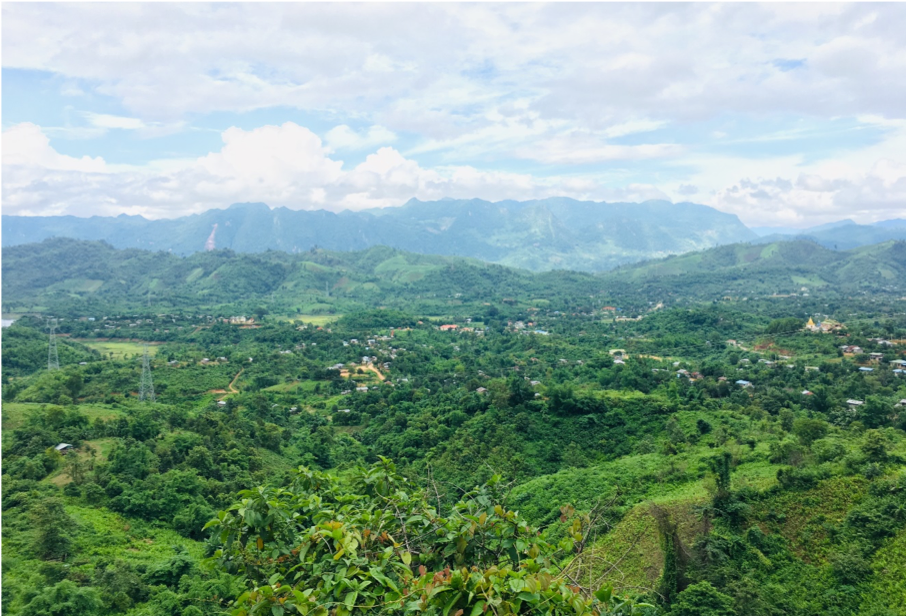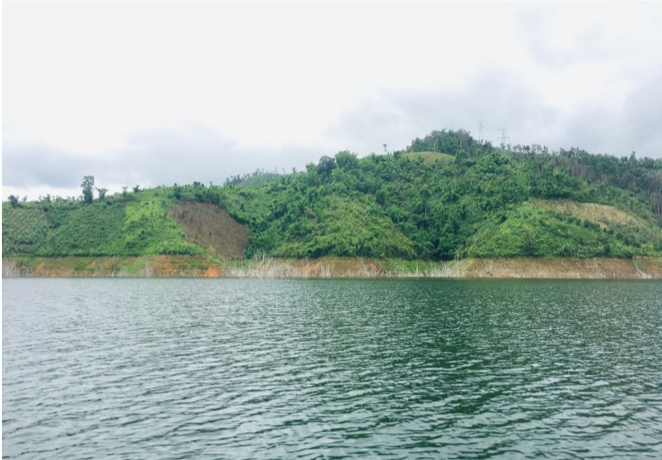Supporting Myanmar to conserve forest germplasm resources and restore forest ecosystem services
On 7 August 2019, APFNet, in collaboration with the Forest Research Institute (FRI) of the Forest Department of Myanmar, launched the project “Integrated Forest Ecosystem Management Planning and Demonstration Project in Greater Mekong Sub-region Project (Myanmar)”. The project aims to conserve forest germplasm resources, rehabilitate forest ecosystem services and multiply social benefits by increasing forest productivity. Guests included representatives from relevant departments, FAO, researchers and local people from the project site. All were welcomed by Dr Nyi Nyi Kyaw, the Director General of the Forest Department of Myanmar during his opening remarks.

About 60 participants from relevant departments, FAO, researchers and local communities attended the inception workshop. Photo: Pak Sngoun Pisey
Between 2010 and 2015, Myanmar was an economy that, with an annual rate of 1.7 percent, was considered to have the third highest deforestation rate in the world. Forest resources had consequently decreased dramatically, which had led to the loss of forest genetic resources, socioeconomic impacts and environmental issues such as land degradation, soil erosion, landslides and low water quality, and so forth. As a result, Myanmar has been implementing reforestation and rehabilitation programmes to establish forest plantations, conserve natural forests, safeguard watersheds and improve community forestry to benefit rural people’s livelihoods. These programmes are very much in line with the goal of the current APFNet project, Dr Nyi Nyi Kyaw emphasized, and he strongly recommended all stakeholders, especially local people, to actively participate in and help to implement it.
Next, Dr Thaung Naing Oo, the Director of the FRI, presented an overview of the project to all participants noting key outputs such as the establishment of an arboretum, the development of an integrated watershed management plan and the improvement of local livelihoods through agroforestry demonstrations. He added that the arboretum will be developed inside the FRI compound to conserve forest germplasm resources and it will also serve as an education centre for the public, as well as a venue where people can connect with nature and understand the importance of forests and the functions they provide. Furthermore, participatory watershed management planning and practice will be demonstrated in the Paung Laung area, Shan State, where about 200 households, which rely heavily on forest resources for their livelihood, will benefit from a 50-hectare agroforestry demonstration site. Fruit and valuable timber trees will be planted along the river banks to sustain livelihoods, rehabilitate the watershed and prevent water and soil erosion in the area.
Next, Dr Thaung Naing Oo, the Director of the FRI, presented an overview of the project to all participants noting key outputs such as the establishment of an arboretum, the development of an integrated watershed management plan and the improvement of local livelihoods through agroforestry demonstrations. He added that the arboretum will be developed inside the FRI compound to conserve forest germplasm resources and it will also serve as an education centre for the public, as well as a venue where people can connect with nature and understand the importance of forests and the functions they provide. Furthermore, participatory watershed management planning and practice will be demonstrated in the Paung Laung area, Shan State, where about 200 households, which rely heavily on forest resources for their livelihood, will benefit from a 50-hectare agroforestry demonstration site. Fruit and valuable timber trees will be planted along the river banks to sustain livelihoods, rehabilitate the watershed and prevent water and soil erosion in the area.

Panorama of the Paung Laung Watershed area. Photo: Pak Sngoun Pisey
All participants expressed their strong support for the project and encouraged cooperation with other relevant departments, as well as FAO, which is also working on sustainable livelihood improvement of local people near the project site to achieve the common goal of improving local livelihoods generally in the watershed.

Shifting cultivation and deforestation are practised along the river bank leading to soil erosion and forest degradation in the watershed area. Photo: Pak Sngoun Pisey
On day two, the project team visited the project site in Paung Laung Watershed, a reserve forest of Shan State. This area is located upstream of the watershed where the government has provided compensation for local people when relocating them from their former village to the downstream area during hydropower dam construction. With limited livelihood opportunities in the new village, local people can only apply their traditional knowledge of shifting cultivation and collecting non-timber forest products to support their families while also extending agricultural plots to the reserve forest. “Local people here normally clear the forest and grow their crops on the sloping area along the stream which causes serious problem such as soil erosion, landslides, and lower water quality. Hence, we need to have consultations with villagers to achieve a consensus on how to protect the functions of the watershed. This could be done by formulating a management plan and improving the productivity of their farmland through agroforestry,” said Dr Ei Ei Swe Hlaing, project coordinator. Moreover, Mr U Tint Shwe, head of Leinli village also indicated that this village is one of ten villages in this area that have never received any support from NGOs or projects before so they hope that this project will help them to improve their knowledge and livelihoods, especially through technical support to upgrade the farm land.
Generally, it is expected that this project will contribute to the economy’s needs to conserve forest genetic resources and showcase integrated watershed management and best practices, such as agroforestry, for livelihood improvement in this watershed area in Myanmar.
Generally, it is expected that this project will contribute to the economy’s needs to conserve forest genetic resources and showcase integrated watershed management and best practices, such as agroforestry, for livelihood improvement in this watershed area in Myanmar.



